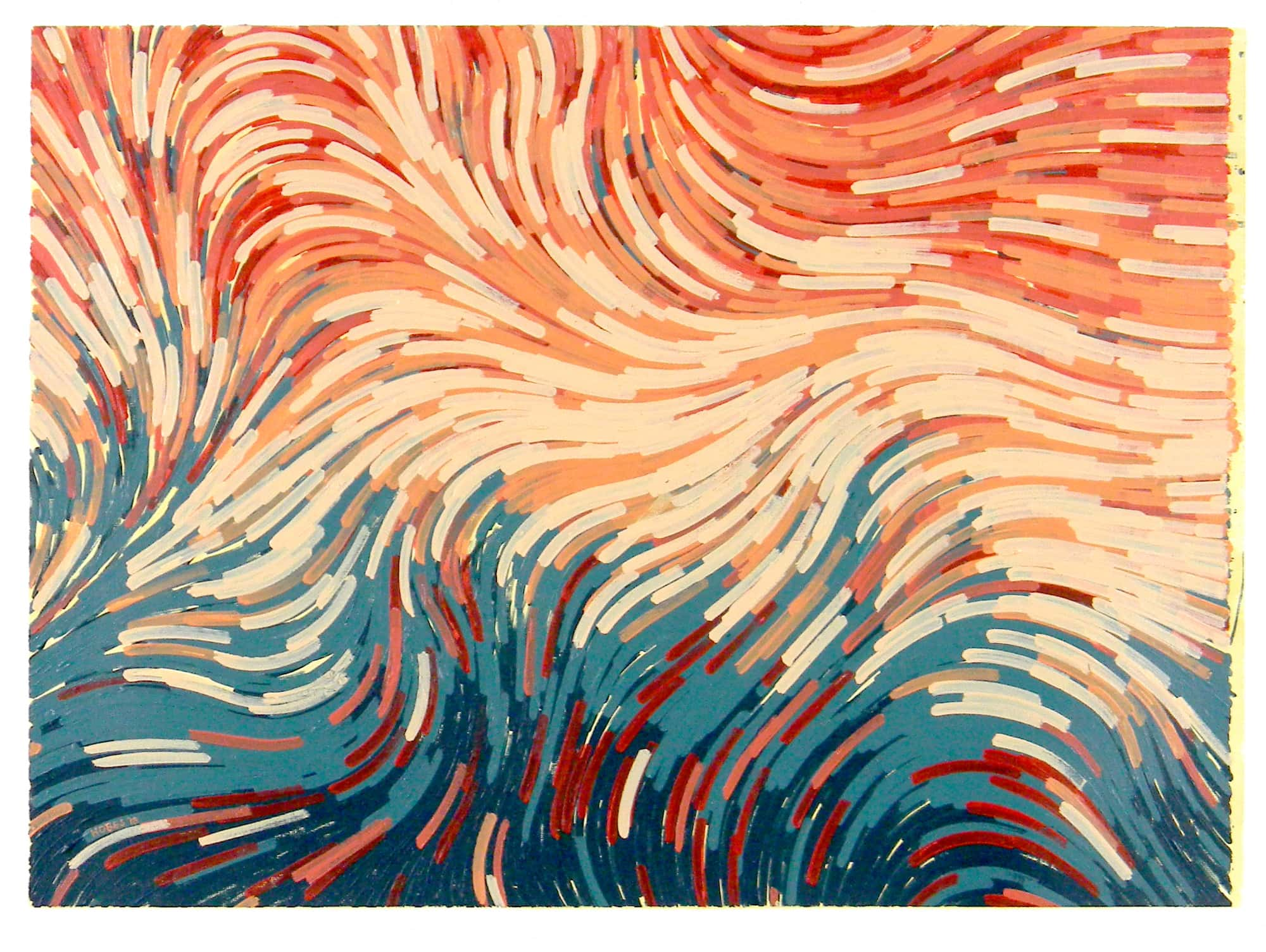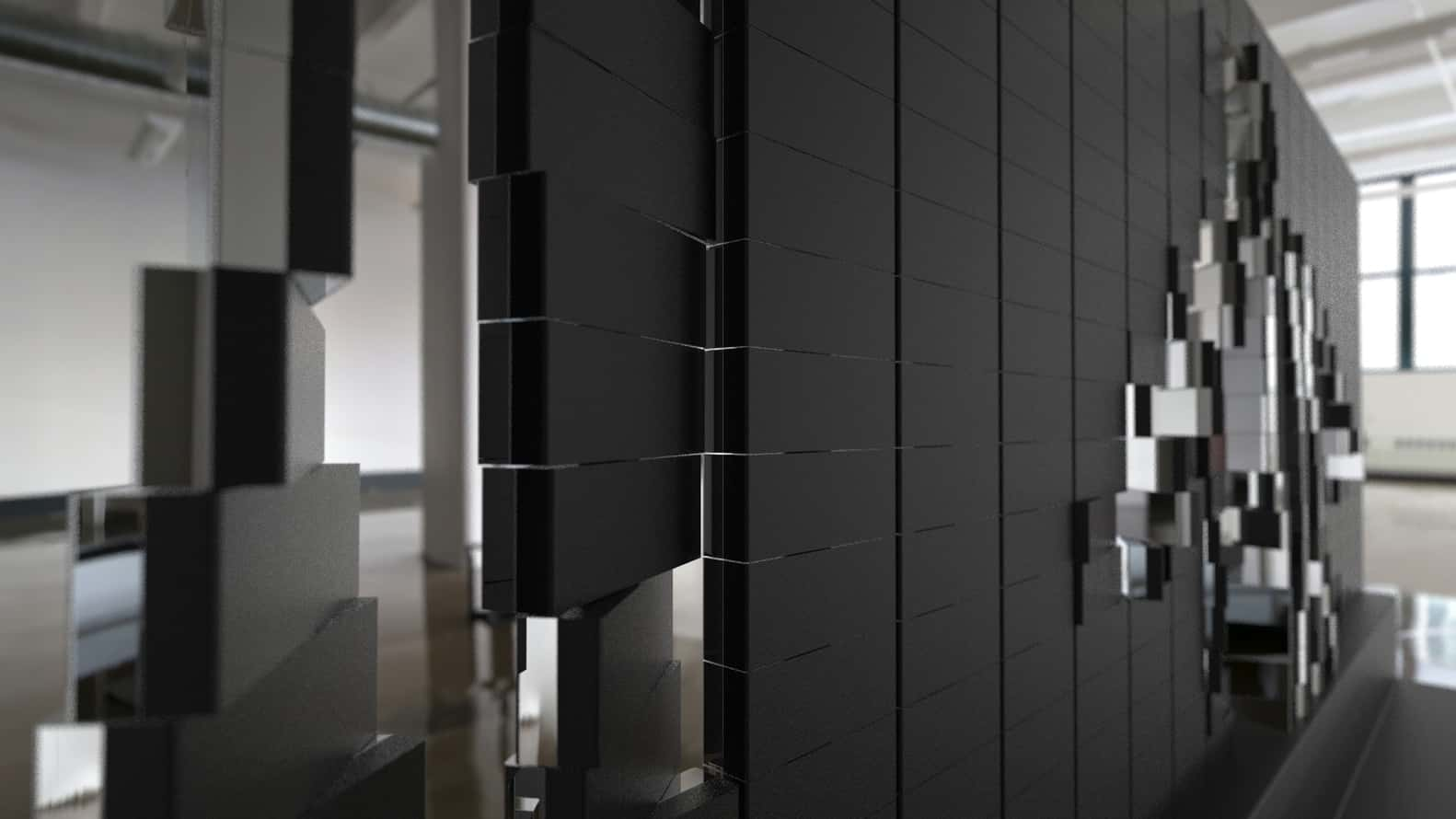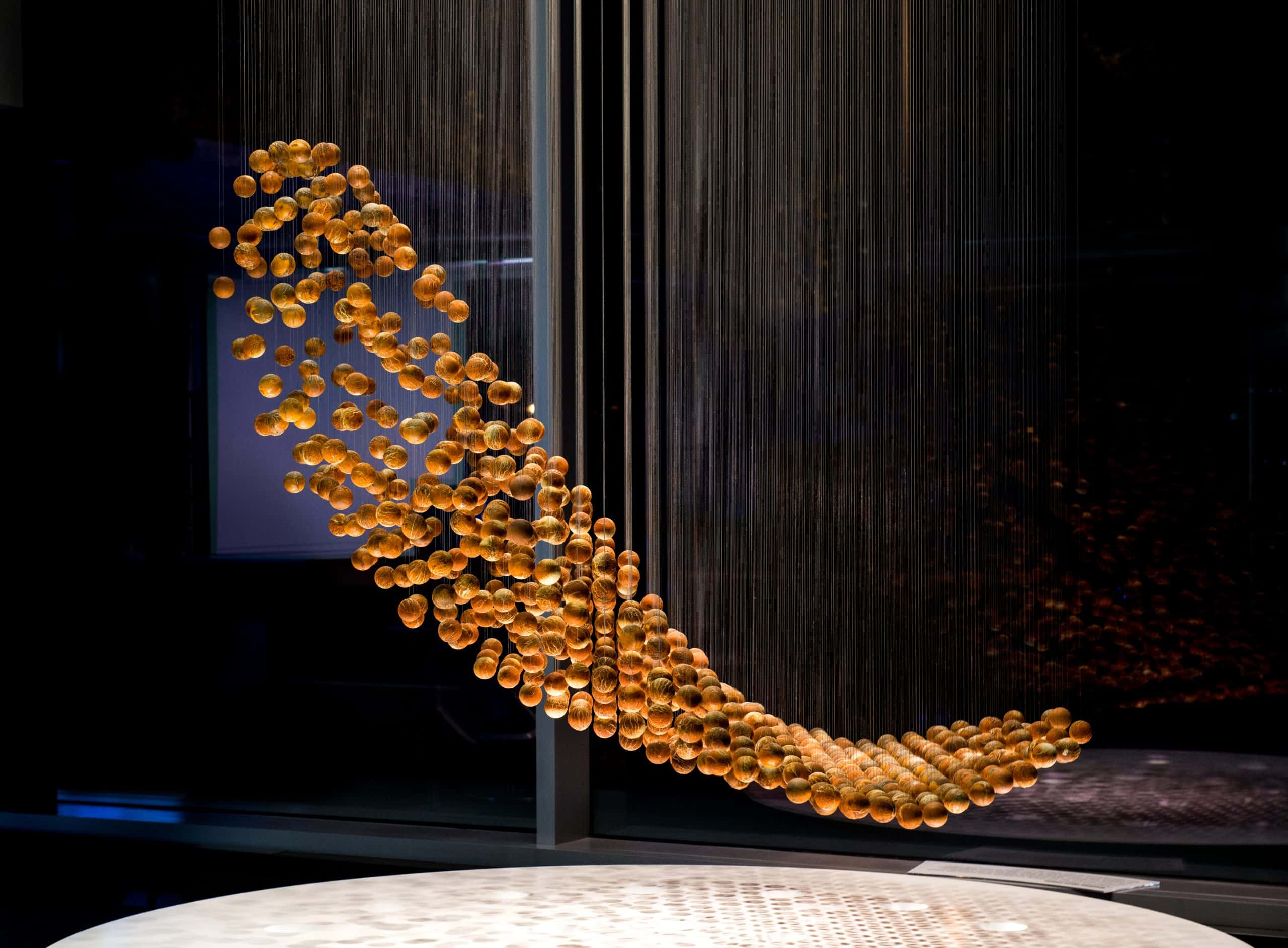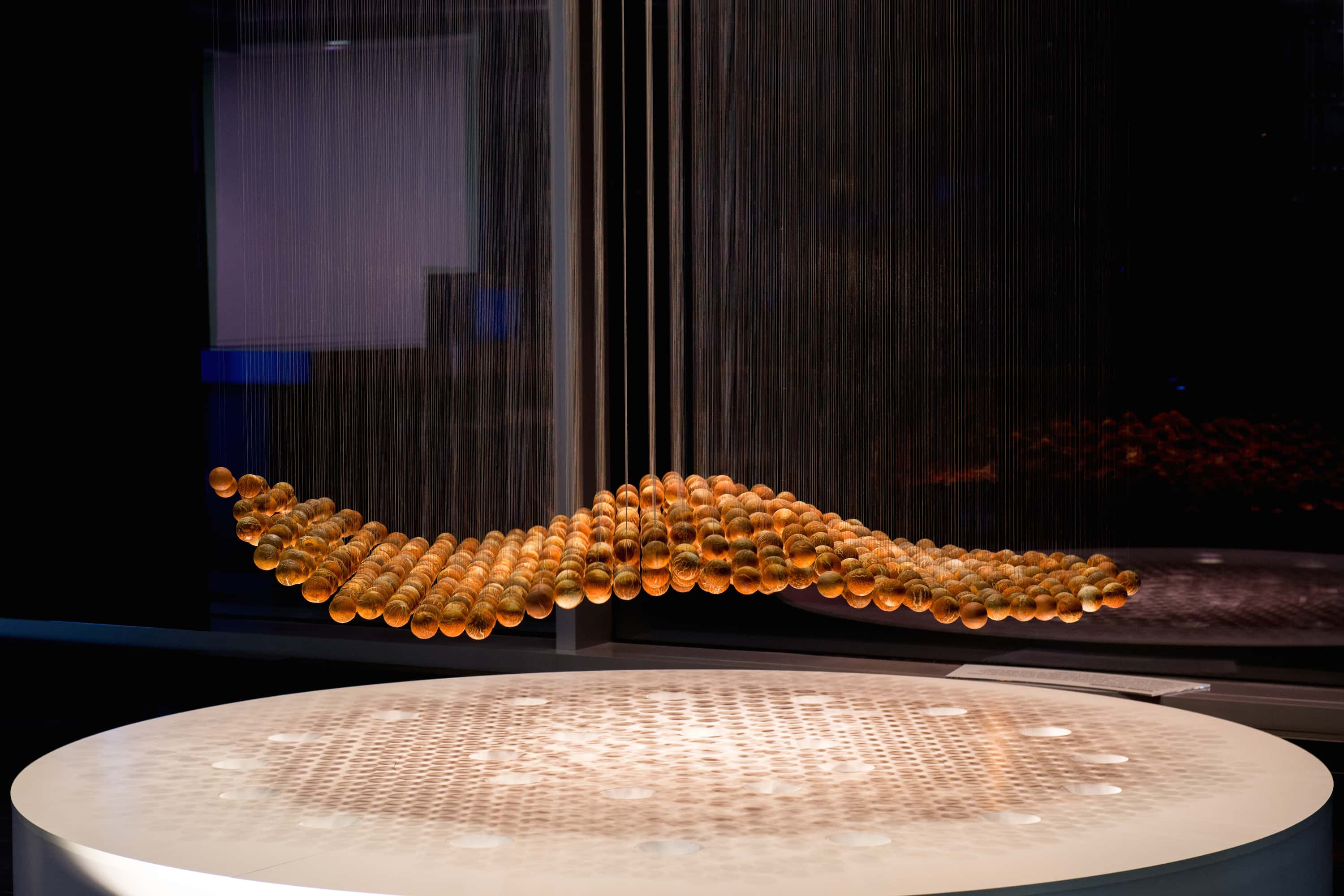Initial Brainstorming
Kinetic Sculptures
Early on in our brainstorming session, several clear themes emerged. The first was around kinetic sculptures. Works by BREAKFAST and Anthony Howe were inspiring to see, and we wanted to build something similar. In particular, the way that most BREAKFAST pieces were comprised of many smaller pieces, each with their own individual movement, was fascinating to see and strongly affected our final direction.

Computational Art
At the same time, we were looking at different computational art pieces by people like Tyler Hobbs , or on places like Open Processing. Computational art felt like it felt our project well:

- Pieces often came with a sense of dynamic motion that would map well to a kinetic sculpture
- Pieces would take user input and use it in different ways
- Pieces were generally composed of smaller elements moving independently similar to BREAKFAST pieces
Sustainability
A final emerging theme was a focus on sustainability, either as something to consider while building the project or something to drive the artistic direction of the project. We did consider the latter for a while - having a project that somehow responded to data about sustainability at Olin seemed like an interesting project. However, we in the end we decided that focusing on sustainability in our process would be more interesting and allow us to explore more ideas.
Ideas
Flip Disks


Our first pitch was to make a smaller version of a BREAKFAST flip-disc display or a BREAKFAST Brixels display that responded dynamically to human movement. We liked the idea of having mechanical components that could be individually addressed by software, especially with breadth of options it gave us when designing how people might interact with it. Our MVP would be a 8x8 grid of "mechanical pixels", each controlled by a motor or magnet, all controlled by an arduino hooked up to a webcam. Further, we wanted to source all of our material sustainably - we had contacted a local recycling facility and gotten permission to use whatever materials we wanted that they had.
Breaking Wave
Unfortunately, our initial idea fell apart when it came time to put together out budget estimate. We couldn't figure out how to source 64 motors with $250, so we had to pivot. Our next idea followed similar principals, and was inspired by a piece called Breaking Wave. We would still have many individually moving components, but now they would be grouped together along axles, bringing us down to only 8 required motors. With our idea decided, we moved on to start building our a proof of concept in Sprint 1.

